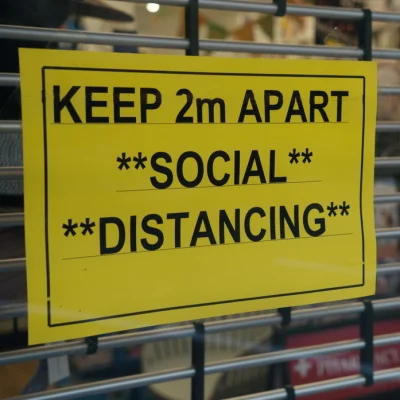The COVID-19 pandemic has put the world on hold these past months with major social and economic consequences. Now in many countries the restrictions are about to be or already being lifted, and it is crucial for policymakers to accurately predict how the spread of the virus will change over time.
You may also like: Policy, Guidance and Recommendations for COVID-19 Decision-Making
Researchers from Italy identified a clear mathematical trend in new cases and death numbers in China through a function commonly used in statistics, and applied the same model to make predictions about the situation in Italy. This approach does not take into account the impact of factors such as testing or social distancing, but, when tailored to each country’s parameters, can still be useful for public health COVID-19-related policies.
A study
analysed contact surveys data for Wuhan and Shanghai before and during the COVID-19
outbreak and contact tracing information from Hunan Province. The results showed,
among others, that social distancing alone, as implemented in China during the
outbreak, was sufficient to control the outbreak.
Using a technique called numerical modelling, researchers in
Brazil have conducted a wide-scale analysis of the increase
in confirmed COVID-19 cases across nine countries in Asia,
Europe, North America and South America, and examined the efficiency of
various mitigation measures. They have found that the growth follows a power
law curve, and the country-specific factors mostly affect the exponent of the
spread. Their results show that softer quarantine measures have a much lesser impact
on flattening the growth curves than stricter ones, and that broad testing policies
should be implemented to identify and isolate asymptomatic individuals.
These are confirmed by a study
on COVID-19 transmission dynamics in Taiwan – the authors note that finding and
isolating symptomatic patients alone may not suffice to interrupt transmission
and suggest that other measures might be required, such as social distancing. An
analysis
based on the data from the Chinese city of Shenzhen revealed that contact
tracing and extensive testing helped to reduce the time of identification of
symptomatic COVID-19 cases from 5.5 to 3.2 days. It is noted, however, that the
overall impact of isolation and contact tracing is uncertain and highly
dependent on the number of asymptomatic cases.
Examining the interactions between people, a team from Hong Kong developed
a model of the underlying transmission patterns among different populations and
analysed various work resumption plans for a number of major Chinese cities,
including Wuhan. The populations were divided into seven age groups, each of
them having their own social circles, gathering places and activity patterns. Modelled
social contact settings included households, schools, workplaces and public
places, and work resumption plans varied from moderate (work resumes earlier
and completes within a shorter period of time) to stricter ones (work resumes
later within a longer overall time frame). The authors concluded that their
model could help policymakers to decide on optimal reopening strategies and
timeframes. The tools used for the research will be openly shared.
To assess
how lifting or extending different social-distancing measures at various
times can impact each state of the
U.S., an online
tool, COVID-19 Simulator, was developed. Using the most recent data and
infectious disease modelling, it analyses how interventions such as lifting
restrictions, extending a stay-at-home order and implementing a lockdown will
impact the rate of new cases or deaths, among other parameters.
In any
case, another study
argues, compromises between the economy and human health are inevitable in
the COVID-19 context. Combining macroeconomics with epidemiology, a U.S. team developed
a model to measure the economic consequences of social distancing, which can be
applied in most developed economies. The model distinguishes ‘core’ workers – eg
those in healthcare or food and transportation – from everyone else. In each
scenario with interventions the economy shrinks by various degrees, but taking
no action would still mean much more severe consequences for public health.
The future
course of the virus is still highly unpredictable. According to one report,
the coronavirus is likely to keep spreading until 60% to 70% of the
population has been infected to develop ‘herd immunity’ – and this is likely to
take another 18 to 24 months. Others, however, are thinking
of the worst-case scenario of the never-ending pandemic.
Image credit: Chameleon
Pictures via iStock


![Tuberculosis Diagnostics: The Promise of [18F]FDT PET Imaging Tuberculosis Diagnostics: The Promise of [18F]FDT PET Imaging](https://res.cloudinary.com/healthmanagement-org/image/upload/c_thumb,f_auto,fl_lossy,h_184,q_90,w_500/v1721132076/cw/00127782_cw_image_wi_88cc5f34b1423cec414436d2748b40ce.webp)







